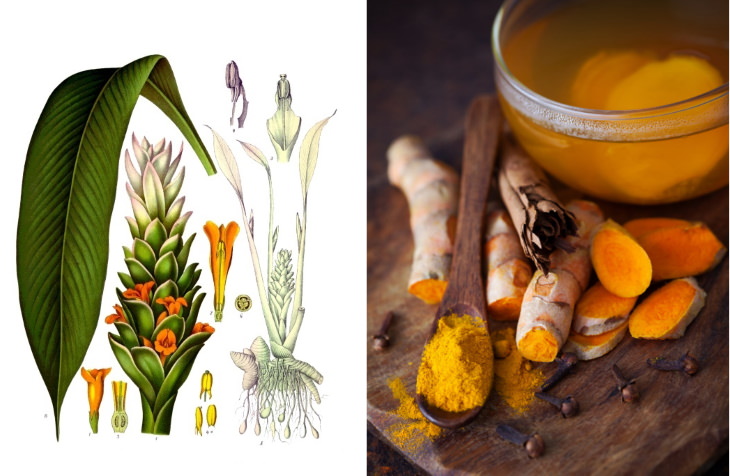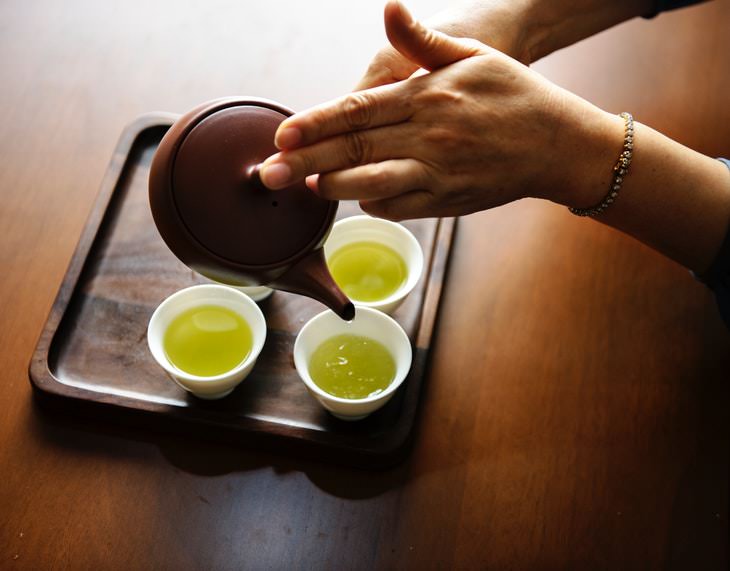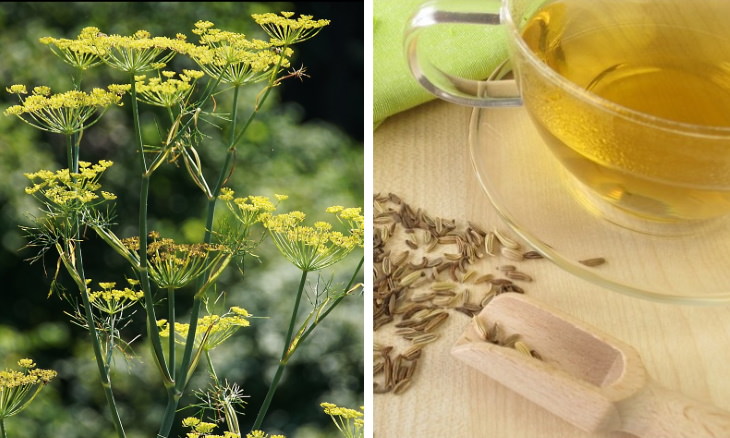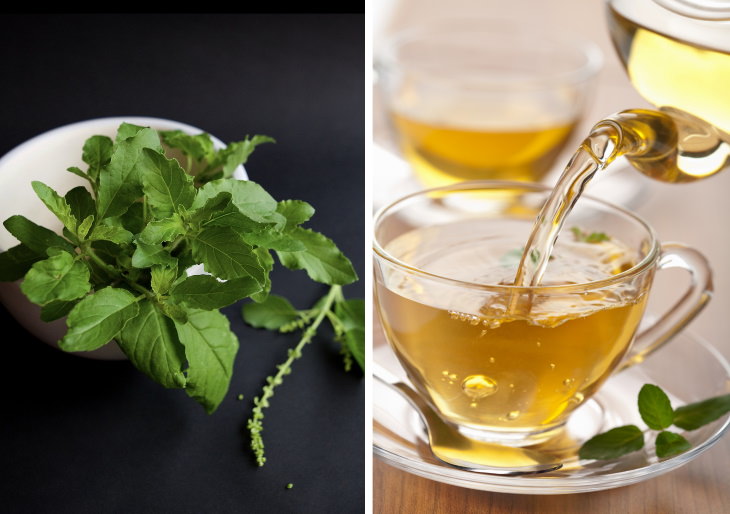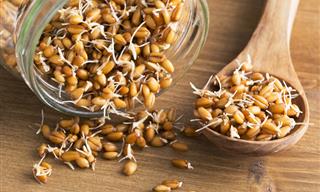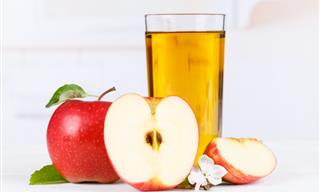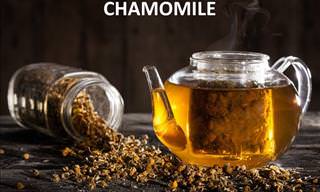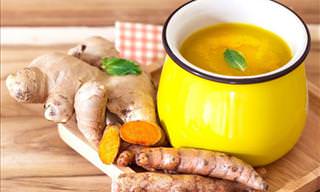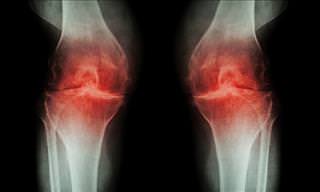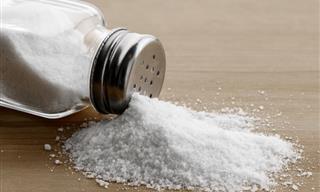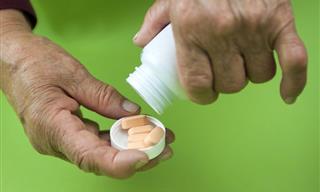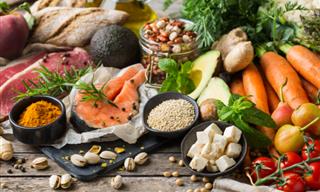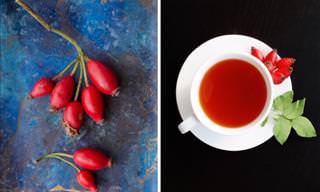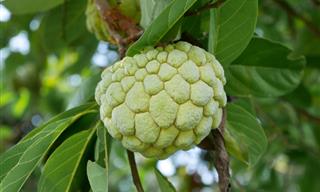1. Rosehip Tea (Rosa canina)
Rosehip tea is prepared from rose hips, small, bright red accessory fruits that grow on a particular type of rose, the dog rose. Rosa canina, the scientific name of the plant, is a widespread species of wild roses common all around Europe, northwest Africa, and western Asia, and its fruits were traditionally used to treat different ailments for millennia.
Rich in vitamin C, E and β-Carotene, these fruits were an important source of vitamins for the previous generations, especially during the winter, as dried rose hips can be stored for months without going bad. Only recently, however, we have discovered that rosehip is extremely rich in phenols, potent antioxidants that protect the cells from free radical damage.
Apart from that, the fruits contain several triterpene acids, which are known to prevent inflammation. Clinical trials have reported that rosehip powder can reduce pain in rheumatoid arthritis, one of the most common chronic inflammations.
How to Prepare Rose Hip Tea
Rosehip tea has a red hue and a fruity taste and can be enjoyed both warm and cool. Rosehip is usually sold dried, and both seedless and whole rose hips are available for purchase.
If you’re using seedless ones, simply toss around 7 pieces into a cup and steep them for up to 10 minutes, further draining the solids. If you have whole rose hips, you can boil the same amount on low heat for 10-15 minutes and drain them before transferring into a cup.
2. Turmeric Tea (Curcuma longa)
Turmeric tea is prepared from the roots of the turmeric plant. The roots are sold fresh, dried and, most often, in the form of a powder. Turmeric is common throughout Asia, and the bright golden roots of this plant were used in Ayurveda and traditional Chinese medicine for millennia. Powdered turmeric is also used as a natural dye.
Turmeric owes its anti-inflammatory effects to the active ingredient called curcumin which also gives the root its bright yellow color. Several studies using a turmeric supplement confirmed that it’s effective at relieving the pain and reducing inflammation caused by chronic inflammatory conditions, such as arthritis, inflammatory bowel disease (IBD), and heart disease.
Turmeric was also shown to help joint and muscle pain and increasing mobility both in osteoarthritis and post-exercise.
How to Prepare Turmeric Tea
Both turmeric spice and the fresh root can be used to prepare a delicious cup of turmeric tea. If you’re using fresh turmeric, you’ll need around 1 teaspoon of it to yield 1 large mug of tea, but if you’re using powdered turmeric, only half the amount or ½ teaspoon of the powder will suffice.
The preparation is simple as can be: simply simmer the water and turmeric mixture for around 10 minutes, and then drain into a cup. A little lemon and ginger complement the taste of this tea wonderfully.
3. Green tea (Camellia sinensis)
All tea varieties are made of the leaves of the Camellia sinensis plant, but different growing and processing techniques yield different kinds of tea. Green teas are generally fermented and processed much less and more gently than red or black tea varieties, and so it contains a lot more antioxidants and other beneficial phytochemicals.
Green tea originated over 1.000 years ago in China, but ever since, it spread to other Asian countries and is popular worldwide today. The antioxidants we mentioned earlier are all polyphenols, and one of them, EGCG, is considered to be most effective at dealing with inflammation.
Japanese matcha tea is reported to have the highest amounts of EGCG, but most green teas will contain the beneficial ingredient as well. Research reports that EGCG can relieve IBD symptoms and can dampen the development of chronic degenerative diseases (Alzheimer’s, heart disease and some cancers).
Do keep in mind, however, that much like coffee, green tea contains caffeine, and so it can be harmful to certain patients, so talk to your doctor to check for any possible medication interactions.
Green tea comes in countless varieties, each having its own optimal brewing time and temperature, so follow the instructions on the packaging of the tea of your choice. We recommend opting for loose leaf teas, as those are generally made of younger tea leaves that have more antioxidants.
4. Fennel Tea (Foeniculum vulgare)
Fennel seeds, in particular, are rich in phenols, just like rosehip, and are often used to soothe digestive issues, particularly bloating, but it is also a potent pain reliever for menstrual cramps.
How to Prepare Fennel Tea
Fennel tea has a light yellow color and a sweet taste comparable to licorice. To prepare the tea, use 1-2 teaspoons of crushed fennel seeds and steep them for 10-15 minutes in a cup of hot water.
5. Ginger Tea (Zingiber officinale)
Ginger root needs no introduction, it’s one of the most popular tea ingredients and an extremely widespread spice. Ginger originated somewhere in Southeast Asia a long time ago, but today, its medicinal and culinary uses span worldwide and go far beyond traditional medicine and cuisine.
As of today, scientists discovered over 50 antioxidants in ginger, and these powerful phytochemicals can reduce the inflammation in your entire body. Studies involving diabetics, as well as patients suffering from osteoarthritis have observed a global reduction in many inflammation markers following a course of ginger supplements.
How to Prepare Ginger Tea
Although my favorite way to include ginger in my tea is to combine it with green tea or other herbal tea, you can prepare ginger tea alone as well.
If you’re using dried ginger, only ¼ - ½ teaspoon will suffice to prepare a cup of ginger tea. Steep the hot water and ginger mixture for 5 minutes. If you’re working with fresh ginger, around 1 tablespoon of the finely-sliced root will be enough to make 1 cup of ginger tea, but keep in mind that fresh ginger takes longer to brew around 10 minutes.
6. Tulsi (Ocimum tenuiflorum)
Also known as holy basil, this leafy plant native to the Indian subcontinent is a recurring ingredient in traditional medicine, especially in Ayurveda, where it’s known as a powerful adaptogen capable of helping the body to cope with emotional and environmental stress.
Modern research builds upon the traditional uses of the plant, with studies finding that tulsi has anti-inflammatory properties throughout the body, reducing blood sugar, blood pressure and LDL (bad) cholesterol levels. Other research found that the plant may also reduce swelling, decrease pain and inflammation by inhibiting enzymes that trigger the inflammatory response.
Finally, holy basil use was linked to a reduction of uric acid levels, alleviating pain in such conditions as gout and rheumatoid arthritis.
How to Prepare Tulsi Tea
Just 1 teaspoon of dried or fresh tulsi leaves will be enough to prepare a cup of tea. Simply immerse the herb into a cup of hot water and let it brew for 5 minutes.
 Go to BabaMail
Go to BabaMail



